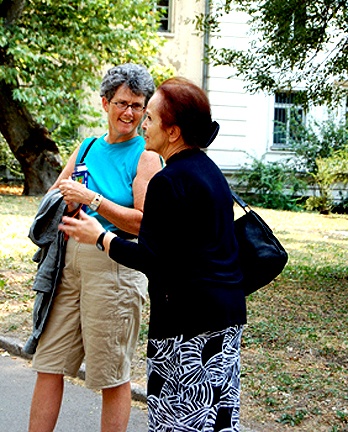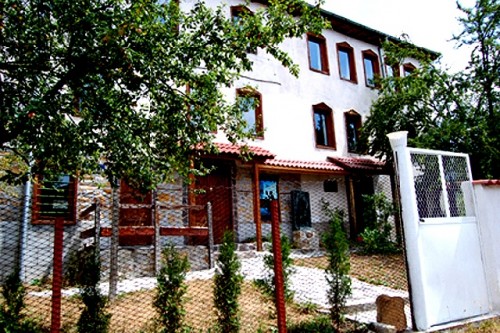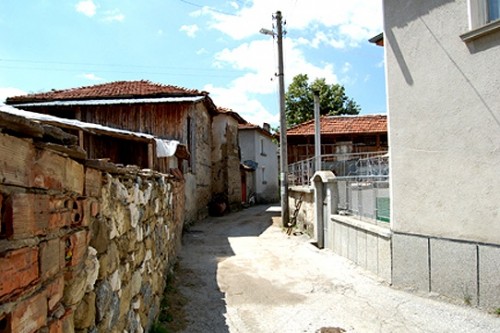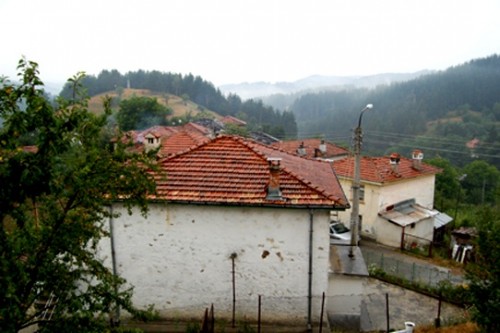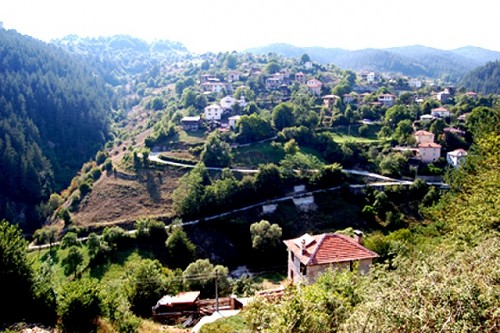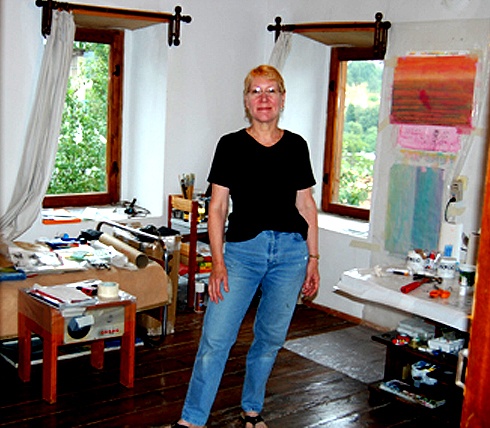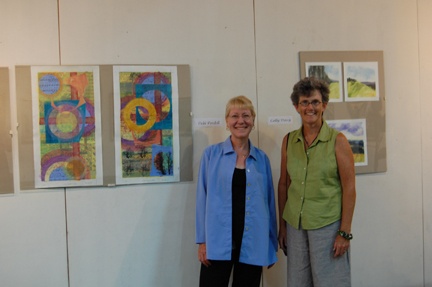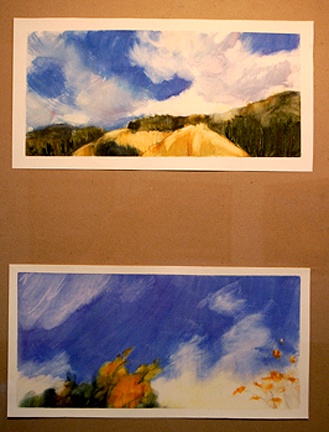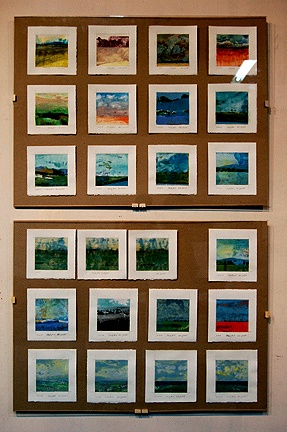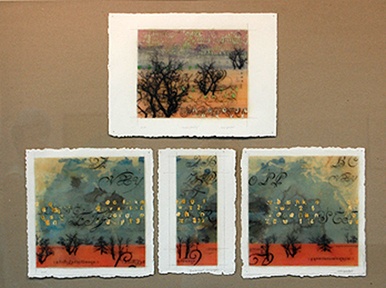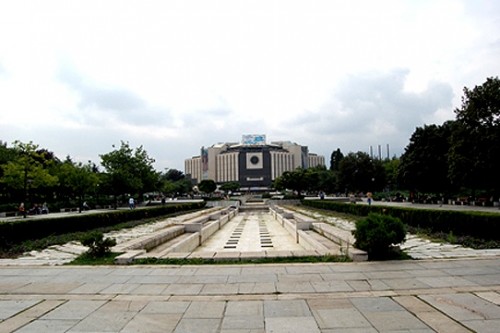North Adams Artist Debbie Pendell and Cathy Doocy Residents in Bulgaria
Five Week Visit Culminates in Exhibitions
By: Astrid Hiemer - Oct 05, 2007
The opportunity to spend five weeks living, working, and exhibiting in Bulgaria came to Debi Pendell, a North Adams artist, and Cathy Doocy, of Windsor, Connecticut by chance. They had a conversation with gallery director, Julia Pavone, of the Alexey von Schlippe Gallery of Art, at the University of Connecticut, in Groton, some time ago, and expressed interest in the Bulgarian residency. When an American artist cancelled this year's trip to Sofia they were contacted.
Sponsors of the Bulgarian and American Residencies are the Griffis Art Center, the Orpheus Foundation, Lyubomir Levchev and his wife Dora Boneva of Sofia and Polkovnik-Serafimova in the Rhodope Mountains, where the residency takes place. American artists can apply to the Griffis Art Center/Orpheus Foundation, and the selection process is very personal. All prior artists had been referred or selected from the Connecticut area. Pendell was from the area before relocating to the Berkshires. The other residency house is in New London, CT, where Bulgarian artists are invited every year. The Griffis Art Center also invites artists from around the world under its International Artists in Residence Program.
Debi and Cathy set off for Sofia in the beginning of August and were greeted at the airport by Levchev, a nationally known and revered poet in Bulgaria, and Boneva, an accomplished painter who speaks English. The couple welcomed them to their home and Dora escorted them around Sofia for two days, showing them all the sites of an old and modern, Eastern European city with many architectural communist era influences.
They set off to Polokovnik-Serafimova, a village, and a four hour car ride to the Rhodope Mountains with Levchev and his editorial assistant Julia Malinova. Lyubomir and Cathy would communicate in French, Julia's English was limited. Debi particularly wondered throughout the trip what, why, and how -actions, details, and information- were correctly communicated, emerged, or were arranged, because of the language barrier. Relatively few older people spoke any English and the Americans did not speak Bulgarian; however Debi recalled a few expressions, at my prodding, that she had learned.
Their temporary home and studio was the biggest house in the village, and they occupied one half of the residence. Lyubimir and his assistant lived and worked in another house at the other end of the village. Many homes are beautifully nestled into the hills and Debi found similarities with the setting to the Berkshire Hills, but the Rhodope Mountains are grander. Many homes were under reconstruction and the accompanying building noise as well as the sounds from animals: Cows, horses, donkeys, chickens and roosters, birds, cats and dogs became part of their village life. Now, both artists are missing the sounds. At the spur of the moment, it seemed, Lyubomir would take them away to meet a writer, an artist, or a politician, in hope of successful American-Bulgarian conversations and introductions. Actually, he had been the Head of the Union of Bulgarian Writers during a time of the communist era and also then was very active in fostering East –West relations.
When their host drove the two American artists to the Museum in Smolyan, where they would have a four day long exhibition, the duo enjoyed meeting the ultimately helpful and competent staff, but were surprised by the approximately 60 foot long wall, for which they would have to produce work. Debi and Cathy brought all their suitcase-size paper and materials from the US, because they knew that artist materials would be scarse and even the store in Sofia was small and carried none of the materials that Debi wanted. She did buy some extra -large size paper.
After two weeks in PS, as they began to refer to the village, Lyubimir and Julia returned to Sofia and the two women started to work in earnest. Debi had chosen a studio on the third floor and Cathy worked in an open air studio above the garage, which had three walls and a roof, a gazebo-like space. The summer was hot and mostly dry. Cathy paints landscapes in large gestural forms with expressive skies, and only from memory. She actually had to turn away from the view, in order not to be distracted by the surroundings. Her supply would adequately fill her half of the wall. Debi makes large scale, multi-layered collages and paintings often involving encaustic processes. These require several drying times. To create abstract or figurative forms, words and letters, she brought small, suitcase-size papers, acrylic paint and gesso. She felt that the pieces she could produce would not adequately represent her work or fill the space in the exhibition.
With the paper bought in Sofia she made four, abstract acrylic and magazine-paper layered collages. She later realized that she was forming the many halos and circles of icons, which are ever present in churches and homes. In these four works she also applied some Cyrillic print from magazines. She then found enough materials for a series of small, 6 x 6," alas, landscape-like acrylic studies, which were exhibited in a grid form. Because of the language barrier Debi felt that "my art never had to represent me so completely before in my life."
The two women did not cook, but spent their evenings at an outdoor patio and restaurant of the local dairy inn, which was a meeting place for the village. Regular guests included six British families, who have summer homes in Polokovnik-Seravimova or have actually settled there, with young children in a local school. The eating ritual included home-made Bulgarian food, watching the news on TV, and taking in the local scene. How entertaining. Having dinner would last three to four hours. They went shopping for household items in a near town, where they also stayed in contact with the US at an internet café. Cathy drove the sixteen year old Renault on dangerous roads, as Debi would explain. Before installing the exhibition, there was time for a two day trip to Plovdiv, three hours away, and the second largest city in Bulgaria. They stayed at Hotel Bulgaria in old Plovdiv, which had a Roman amphitheatre and other Roman ruins, beautiful old houses, built in a national revival style, which were open to visitors. Much to their surprise these houses were still filled with extensive art collections. On their return trip they stopped at Assenovgrad, a smaller city, where a friend took them to a monastery and a fortress. The monastery dated back to the 14th Century, but had been rebuilt several times due to fire and warfare.
Their first Bulgarian exhibition took place at the Art Museum of Smolyan. A poster was printed and distributed in all the windows in town. They received flowers from a representative of the mayor, there were music, impromptu speeches, translations, and a lively opening. Debi and Cathy became international art stars! The exhibition was well received in two newspaper articles and the western art work was intently noted and very different from contemporary Bulgarian art. The second, one day exhibition, occured at the immense National Palace of Culture in Sofia a couple of days before their return to the USA. Again, the museum had an opening, the director gave a speech, and many people came to celebrate the American artists.
For Debi, the most valuable experience of the residency was to have lived this cultural immersion and participating in the Bulgarian art scene. Both artists wish to return to Bulgaria someday – soon.
The Griffis Art Center
New London, CT
http://www.griffisartcenter.com/overview.htm
Toby Griffis
hggriffis@wallersmithpalmer.com
Debi Pendell

